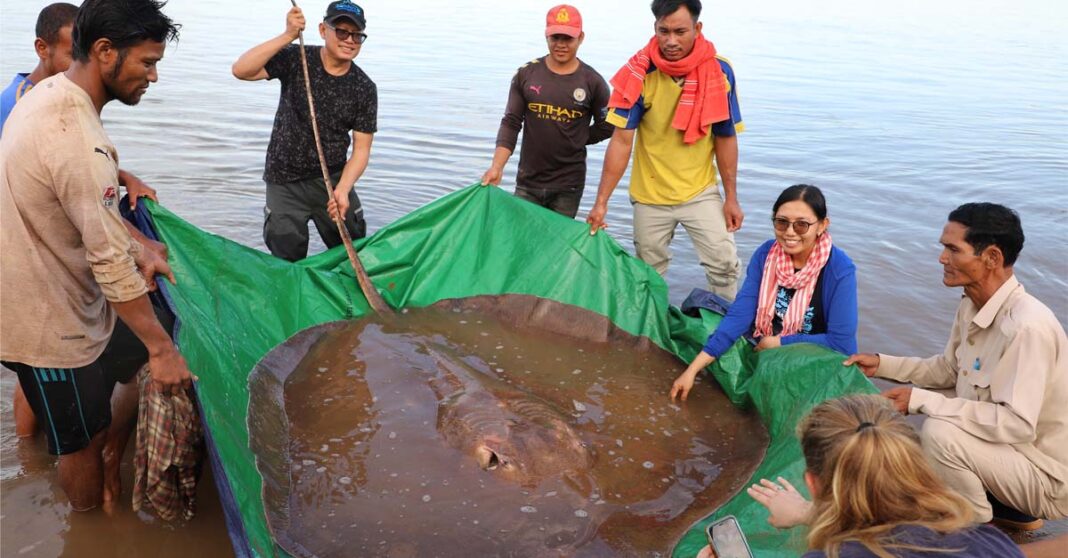A giant freshwater stingray was captured in the Mekong River last week in Cambodia’s northern province of Stung Treng.
The 180-kilogram ray was accidentally caught by a fisherman on 5 May in a small island community in the middle of the Mekong.
A river guard based in Koh Preah Village who witnessed the catch told Phnom Penh Post that the stingray was caught after it accidentally hooked itself on a line cast by the fisherman.
“After he saw that he caught the giant stingray, he called out to villagers to help him as the stingray dove further into the water in the middle of the river but remained hooked on his line,” the river guard told the newspaper.
“Then villagers came and pulled the stingray to the side of the river and called the river guard who contacted the Wonders of the Mekong project to record the details about it before releasing it back to the river,” he said.

The fisherman who caught the whipray on his fishing hook explained that he wanted to help conserve the whipray, a Mekong endangered species. He contacted the Wonders of the Mekong project team and asked representatives to tag, measure, and release it back into the wild.
The animal was identified as a female giant freshwater whipray (Urogymnus polylepis). It measured 185 cm in width, 200 cm in length, with a total body length from tip to tail measuring 393 cm, according to Wonders of the Mekong.
Locals say this is not the first time a giant ray has been caught by fishermen, but the Wonders of the Mekong project provides incentives for any catches to be reported.
World Wide Fund for Nature Cambodia (WWF-Cambodia) said the giant stingray is the largest and heaviest species of freshwater fish in the world.
Despite their size, these river giants were not discovered and cataloged by scientists until 1990. They are now confirmed to be living in some river systems in Southeast Asia, including Laos, and as far as northern Australia.



